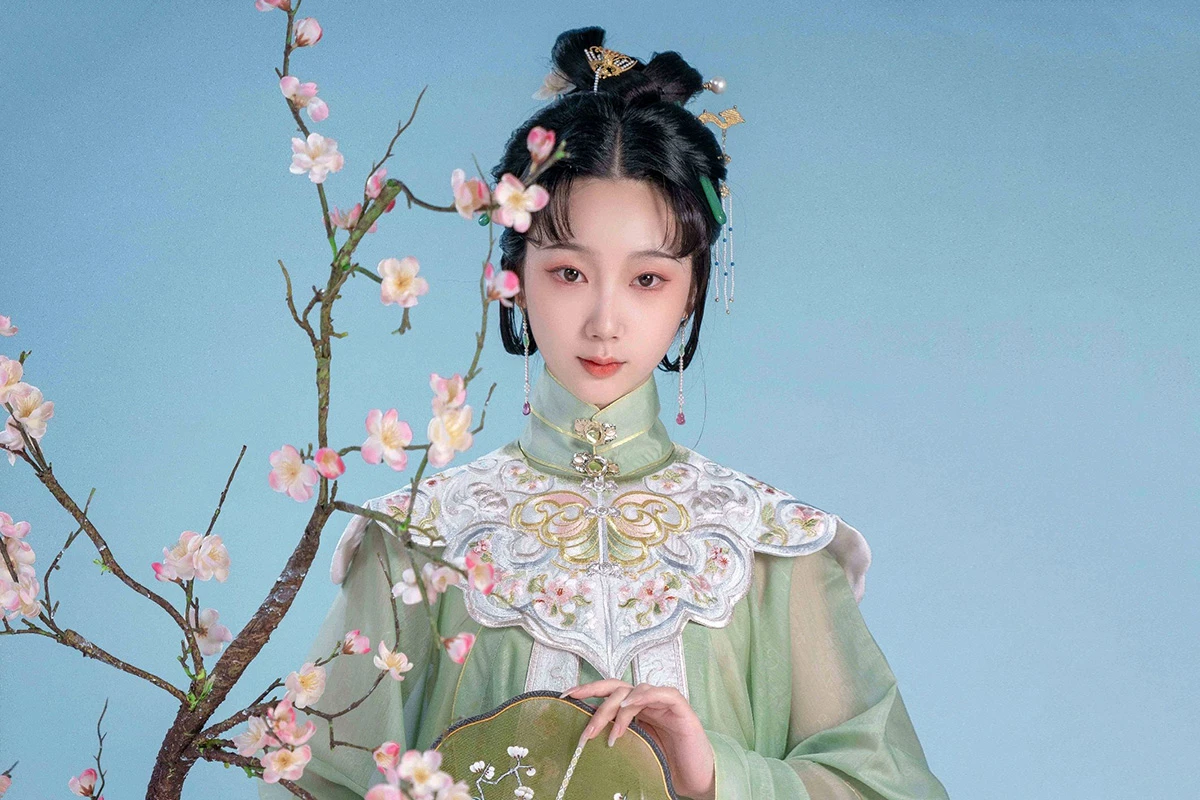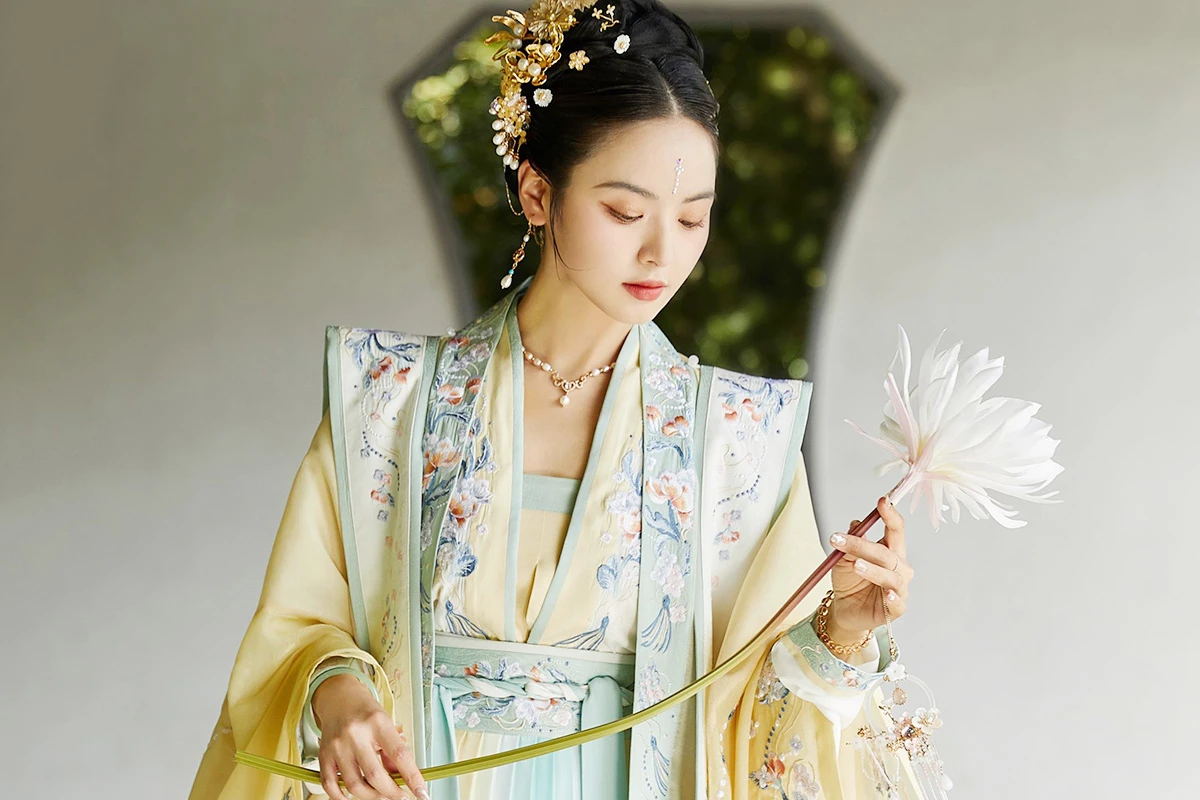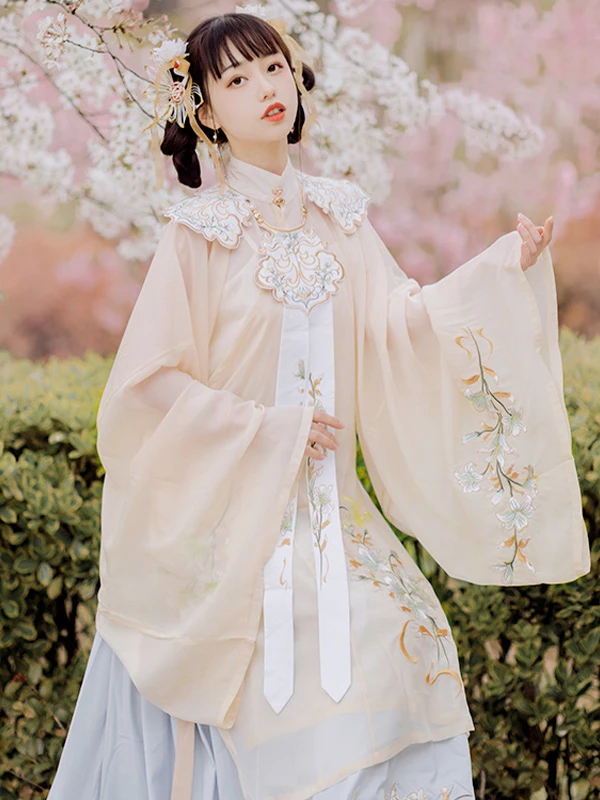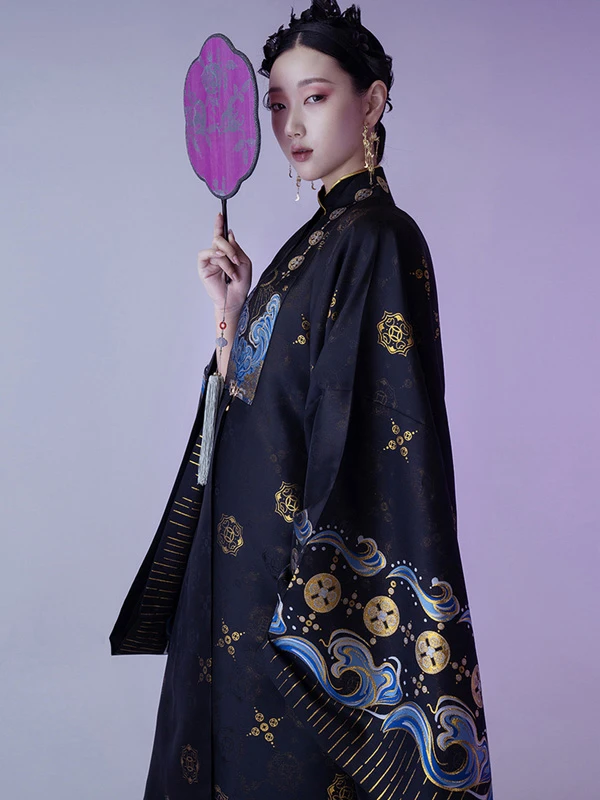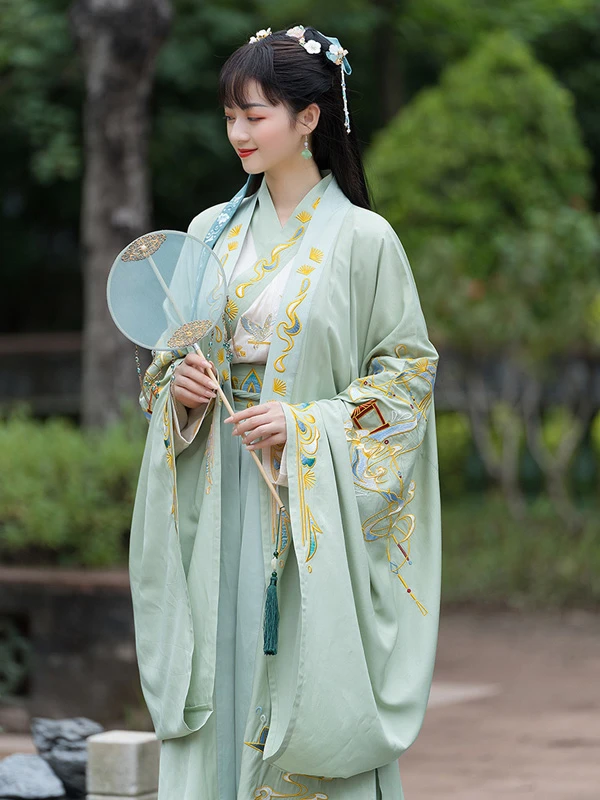The art of embroidery in traditional Chinese clothing has existed for over 2,000 years and has always been rooted in meaningful symbols. According to the Shangshu (an ancient Chinese text also known as the Book of Documents), a ruler once declared that his ministers wear clothing embroidered with emblems representing the celestial and earthly realms on both their upper and lower garments as a way to honor and be reminded of the sacred purpose of governance.
Chinese Embroidery history
Since that time, many auspicious symbols have come to dominate Chinese culture. Hanfu embroidery in particular embraces three common subjects: animals (including mythological animals), plants, and landscapes, to which highly specific meanings are attached. For instance, Mandarin ducks became a symbol of love between spouses, and pomegranates have long been associated with having many children. Plum, bamboo, and pine symbolize integrity and noble character. Cranes represent longevity, and peony patterns represent glory and wealth.
Many embroidery motifs are also based on homonyms, such as fish, bats, bottles, lotuses, jade, and deer. The auspicious patterns carry ancient ideals of peace, longevity, wealth, and happiness. They are also believed to bring people good wishes.
Embroidery styles continued to change as technology improved and new fabrics and colors became available. Trade with other cultures also helped it evolve. During the Ming and Qing dynasties, embroidering artistry reached its peak, especially in the development of patterns. Today, the art form recognizes many folk techniques with their own distinct styles from all over China. Read on to find out more about them!
4 famous types of Chinese embroidery
1. Shu embroidery
Shu embroidery was developed in Chengdu, which is now the capital of China’s Sichuan province. It is characterized by brightly colored threads and tight stitches that are good for complex patterns, and features motifs inspired by birds, flowers, fish, plants, and landscapes. The panda is a very common motif.
2. Xiang Embroidery
Xiang embroidery was named after a river in Hunan province to the south, the place where it was born. This type of embroidery is characterized by reversible patterns and motifs inspired by birds, people, landscapes, and animals like tigers and lions. The patterns are exquisite and place great emphasis on lively colors.
3. Su Embroidery
Su embroidery gets its name from the city of Suzhou in Jiangsu province. Notably, it incorporated western and Japanese styles while also retaining its original pre-Ming styles.
Su embroidery has fine needle patterns and is known for its sophisticated, delicate lines. It combines threads of many different colors to achieve vivid, intricate designs that exist either single or double-sided. Suzhou artisans were the first to use silver and gold threads to make brilliant, flashy embroideries, which continue to be popular in today’s hanfu.
4. Yue Embroidery
Also known as Cantonese embroidery, Yue embroidery is one of Guangdong province’s traditional arts. The earliest Yue embroidery made use of peacock feathers, which were twisted into cordlike threads with horsehair and used for space marking for different colors. This distinct embroidery technique is still used today for decorations in all kinds of items. Common Yue motifs include flowers and mythological creatures such as dragons, phoenixes, and sunbirds.
Modern Hanfu Embroidery Inspirations
Embroidered hanfu are works of art, regardless of the embroidery style or type used. You have many options to choose from; go bold with the elaborate ones, or simpler with minimalist ones.
Modern hanfu has introduced entirely new patterns to the scene and are constantly improving; make sure to keep an eye out for unique designs that bridge the gap between yesterday and today! Below are some stunning embroidered hanfu dresses to inspire you:
1. Light Ming-style Hanfu
The embroidered yellow and green flowers in this modernized Ming-style outfit are soft and delicate to match the pastel overcoat and skirt. The white centerpiece is a variant of the cloud collar, and it is the petal-like embroidery that makes it such a focal point.
2. Dark Ming-style Hanfu
The blue-and-gold waves and wheels on this dramatic hanfu set, which is also a modernized Ming style, are great examples of how new patterns are bringing 21st century tastes to traditional pieces. They are particularly striking against the black base, and do a phenomenal job at pulling together a formal, regal look. You might want something like this for a special occasion or a fancy night out.
This modernized ancient-style hanfu is a vision of understated beauty. It is embroidered with simple yellow and white flowers. What a breezy, casual look for the outdoors!
4. Wei & Jin Dynasty Hanfu
The bright yellow embroidery on this hanfu’s lapels and sleeves feature is modern, but inspired by traditional Chinese elements like gondolas and cranes. Landscape designs on hanfu are currently very trendy, so if this is your style, you have a lot of options.
Tips for Shopping Embroidered Hanfu
- Consider what occasions you would like to wear your hanfu when browsing. The amount of embroidery, as well as its intricacy, determines how formal a hanfu garment is.
- The material and weave of the embroidery will also determine how easy or challenging it is to care for your hanfu. Embroidered garments require special care, so you must be familiar with the recommended care.
- Most embroidery on hanfu is floral. You may consider incorporating flower-themed accessories into your outfit to complete the look.
The embroidery on hanfu comes in many different styles. Bright and vibrant threads may be callbacks to traditional aesthetics, but softer colors are also popular in the present day. There is something for everybody; this becomes more and more true as hanfu continues to evolve. What kind of embroidery do you prefer?

